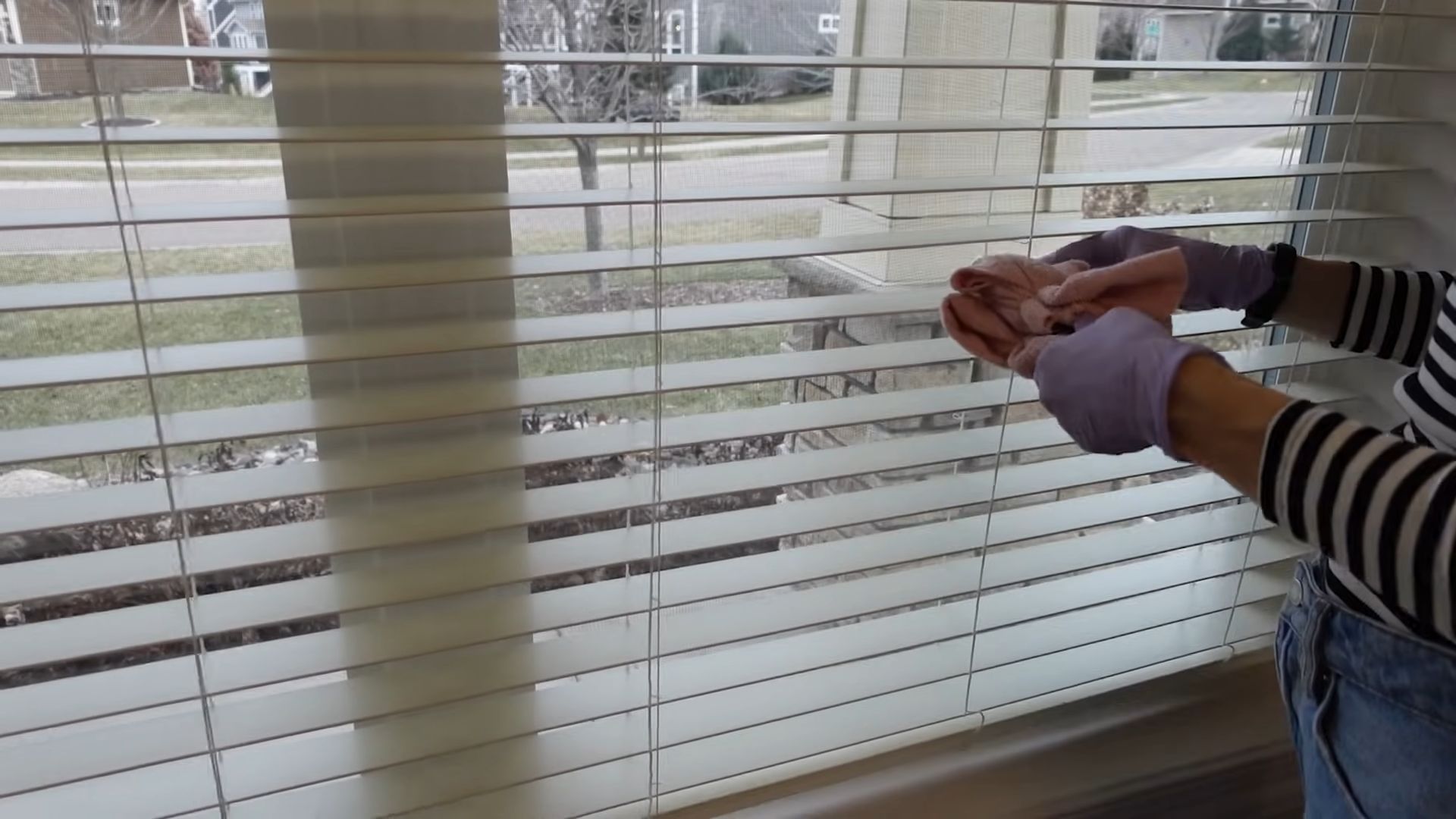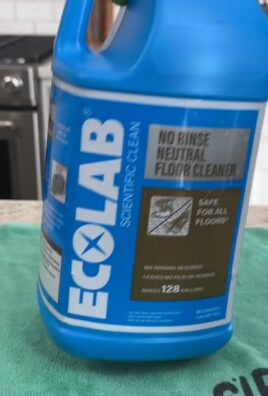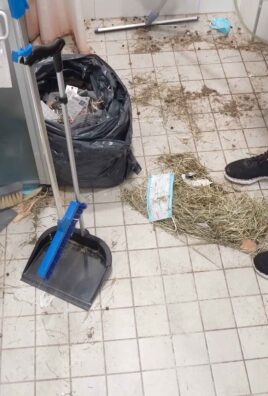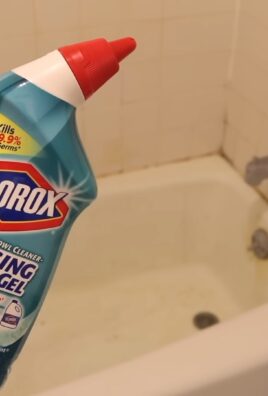Dust Free Blinds Hack: Are you tired of battling dust bunnies on your blinds? Do you spend what feels like hours meticulously cleaning each slat, only to find them covered in grime again a few days later? I feel your pain! I used to dread cleaning my blinds, it felt like a never-ending chore. But what if I told you there’s a simple, almost magical, way to keep your blinds dust-free for weeks, maybe even months?
Blinds have been around for centuries, evolving from simple window coverings in ancient Egypt made of reeds to the sophisticated and stylish options we have today. While their design has changed, one thing has remained constant: the struggle against dust! This DIY dust free blinds hack isn’t just about aesthetics; it’s about creating a healthier and more comfortable living space. Dust accumulation can trigger allergies and respiratory issues, making regular cleaning essential.
In this article, I’m going to share my secret weapon for banishing dust from your blinds. This isn’t some complicated, time-consuming process. It’s a quick, easy, and affordable trick that will save you time and energy. Get ready to say goodbye to dusty blinds and hello to a cleaner, brighter home! Let’s dive in and discover how to achieve dust-free bliss!

DIY Dust-Free Blinds Hack: Say Goodbye to Grime!
Okay, let’s be honest, cleaning blinds is the absolute worst chore. It’s fiddly, dusty, and feels like you’re just moving the grime around. But fear not, fellow cleaning-averse friends! I’ve discovered a game-changing hack that will keep your blinds dust-free for longer, and it’s surprisingly simple. This isn’t just about cleaning; it’s about *preventing* the dust from settling in the first place. Get ready to ditch those dusters and embrace a cleaner, brighter home!
What You’ll Need:
* Microfiber Cloths: These are your best friends for trapping dust. Avoid using paper towels, as they can leave lint behind.
* Fabric Softener: The secret ingredient! It creates a static-repellent barrier.
* Water: For diluting the fabric softener.
* Spray Bottle: To apply the solution evenly.
* Old Sock (Optional): Makes cleaning individual slats even easier.
* Bowl or Bucket: For mixing the solution.
* Ladder or Step Stool (If needed): For reaching high blinds.
* Vacuum with Brush Attachment (Optional): For a pre-cleaning step.
The Magic Formula: Fabric Softener Solution
The key to this hack is a simple fabric softener solution. It’s what creates that anti-static shield that repels dust.
1. Mix the Solution: In your bowl or bucket, combine 1 part fabric softener with 4 parts water. For example, you could use 1/2 cup of fabric softener and 2 cups of water. Don’t worry about being exact; a little more or less water won’t hurt.
2. Pour into Spray Bottle: Carefully pour the diluted fabric softener solution into your spray bottle. Make sure the bottle is clean to avoid contaminating the solution.
Cleaning Your Blinds: Step-by-Step
Now for the fun part (well, as fun as cleaning blinds can be!). I’m going to walk you through the process, whether you prefer using a microfiber cloth or the sock method.
Method 1: Microfiber Cloth Power
This is my go-to method because it’s quick and effective.
1. Pre-Clean (Optional): If your blinds are particularly dusty, you might want to give them a quick once-over with a vacuum cleaner using the brush attachment. This will remove the bulk of the loose dust and make the next steps even easier. Be gentle!
2. Spray the Cloth: Lightly spray a microfiber cloth with the fabric softener solution. You want the cloth to be damp, not soaking wet. Over-saturating the cloth can leave streaks on your blinds.
3. Wipe Each Slat: Close the blinds so the slats are nearly flat. Starting at the top, wipe each slat individually with the damp microfiber cloth. Work your way down, overlapping each stroke slightly.
4. Flip the Blinds: Rotate the blinds to the other side and repeat the wiping process.
5. Dry (Optional): If you notice any streaks or excess moisture, you can use a clean, dry microfiber cloth to gently buff the blinds. However, the fabric softener solution should dry relatively quickly on its own.
6. Repeat as Needed: If your blinds are very dirty, you might need to repeat the process with a fresh microfiber cloth and more solution.
Method 2: The Sock Puppet Technique
This method is great for getting into those hard-to-reach areas and for cleaning individual slats with precision.
1. Prepare Your Sock: Take an old, clean sock (preferably microfiber) and slip it over your hand like a puppet.
2. Spray the Sock: Lightly spray the sock with the fabric softener solution. Again, damp is good, soaking is bad.
3. Pinch and Wipe: Close the blinds so the slats are nearly flat. Use your sock-covered hand to pinch each slat individually and wipe from one end to the other. The sock will act like a mini-duster, trapping the dust as you go.
4. Flip and Repeat: Rotate the blinds to the other side and repeat the pinching and wiping process.
5. Change Socks (If Needed): If your sock gets too dirty, switch to a clean one.
6. Dry (Optional): As with the microfiber cloth method, you can use a clean, dry sock or cloth to buff the blinds if needed.
Dealing with Different Types of Blinds
This hack works well on most types of blinds, but here are a few things to keep in mind for specific materials:
* Vinyl Blinds: These are the most forgiving and can handle a slightly wetter cloth.
* Wood Blinds: Be extra careful not to over-saturate wood blinds, as excessive moisture can damage the wood. Use a very lightly dampened cloth and dry them immediately if you notice any water spots.
* Aluminum Blinds: These can be prone to scratching, so use a soft microfiber cloth and avoid applying too much pressure.
* Fabric Blinds: Test the fabric softener solution on an inconspicuous area first to make sure it doesn’t stain or discolor the fabric. You might also want to consider using a fabric-specific cleaner instead.
Extra Tips and Tricks for Dust-Free Bliss
* Regular Maintenance: The key to keeping your blinds dust-free is to clean them regularly. I recommend doing this every 2-4 weeks, depending on how dusty your home gets.
* Open Windows Wisely: While fresh air is great, opening windows can also let in dust and pollen. Consider using air filters or keeping windows closed during peak pollen seasons.
* Dust Other Surfaces: Dusting other surfaces in your home, such as furniture and shelves, will also help reduce the amount of dust that settles on your blinds.
* Vacuum Regularly: Vacuuming your floors and carpets regularly will also help keep dust at bay.
* Don’t Forget the Cords: Use a damp cloth to wipe down the cords and wands that control your blinds. These can also accumulate dust and grime.
* Test in an Inconspicuous Area: Before applying the fabric softener solution to your entire blind
Okay, let’s be honest, cleaning blinds is the absolute worst chore. It’s fiddly, dusty, and feels like you’re just moving the grime around. But fear not, fellow cleaning-averse friends! I’ve discovered a game-changing hack that will keep your blinds dust-free for longer, and it’s surprisingly simple. This isn’t just about cleaning; it’s about *preventing* the dust from settling in the first place. Get ready to ditch those dusters and embrace a cleaner, brighter home!
What You’ll Need:
* Microfiber Cloths: These are your best friends for trapping dust. Avoid using paper towels, as they can leave lint behind.
* Fabric Softener: The secret ingredient! It creates a static-repellent barrier.
* Water: For diluting the fabric softener.
* Spray Bottle: To apply the solution evenly.
* Old Sock (Optional): Makes cleaning individual slats even easier.
* Bowl or Bucket: For mixing the solution.
* Ladder or Step Stool (If needed): For reaching high blinds.
* Vacuum with Brush Attachment (Optional): For a pre-cleaning step.
The Magic Formula: Fabric Softener Solution
The key to this hack is a simple fabric softener solution. It’s what creates that anti-static shield that repels dust.
1. Mix the Solution: In your bowl or bucket, combine 1 part fabric softener with 4 parts water. For example, you could use 1/2 cup of fabric softener and 2 cups of water. Don’t worry about being exact; a little more or less water won’t hurt.
2. Pour into Spray Bottle: Carefully pour the diluted fabric softener solution into your spray bottle. Make sure the bottle is clean to avoid contaminating the solution.
Cleaning Your Blinds: Step-by-Step
Now for the fun part (well, as fun as cleaning blinds can be!). I’m going to walk you through the process, whether you prefer using a microfiber cloth or the sock method.
Method 1: Microfiber Cloth Power
This is my go-to method because it’s quick and effective.
1. Pre-Clean (Optional): If your blinds are particularly dusty, you might want to give them a quick once-over with a vacuum cleaner using the brush attachment. This will remove the bulk of the loose dust and make the next steps even easier. Be gentle!
2. Spray the Cloth: Lightly spray a microfiber cloth with the fabric softener solution. You want the cloth to be damp, not soaking wet. Over-saturating the cloth can leave streaks on your blinds.
3. Wipe Each Slat: Close the blinds so the slats are nearly flat. Starting at the top, wipe each slat individually with the damp microfiber cloth. Work your way down, overlapping each stroke slightly.
4. Flip the Blinds: Rotate the blinds to the other side and repeat the wiping process.
5. Dry (Optional): If you notice any streaks or excess moisture, you can use a clean, dry microfiber cloth to gently buff the blinds. However, the fabric softener solution should dry relatively quickly on its own.
6. Repeat as Needed: If your blinds are very dirty, you might need to repeat the process with a fresh microfiber cloth and more solution.
Method 2: The Sock Puppet Technique
This method is great for getting into those hard-to-reach areas and for cleaning individual slats with precision.
1. Prepare Your Sock: Take an old, clean sock (preferably microfiber) and slip it over your hand like a puppet.
2. Spray the Sock: Lightly spray the sock with the fabric softener solution. Again, damp is good, soaking is bad.
3. Pinch and Wipe: Close the blinds so the slats are nearly flat. Use your sock-covered hand to pinch each slat individually and wipe from one end to the other. The sock will act like a mini-duster, trapping the dust as you go.
4. Flip and Repeat: Rotate the blinds to the other side and repeat the pinching and wiping process.
5. Change Socks (If Needed): If your sock gets too dirty, switch to a clean one.
6. Dry (Optional): As with the microfiber cloth method, you can use a clean, dry sock or cloth to buff the blinds if needed.
Dealing with Different Types of Blinds
This hack works well on most types of blinds, but here are a few things to keep in mind for specific materials:
* Vinyl Blinds: These are the most forgiving and can handle a slightly wetter cloth.
* Wood Blinds: Be extra careful not to over-saturate wood blinds, as excessive moisture can damage the wood. Use a very lightly dampened cloth and dry them immediately if you notice any water spots.
* Aluminum Blinds: These can be prone to scratching, so use a soft microfiber cloth and avoid applying too much pressure.
* Fabric Blinds: Test the fabric softener solution on an inconspicuous area first to make sure it doesn’t stain or discolor the fabric. You might also want to consider using a fabric-specific cleaner instead.
Extra Tips and Tricks for Dust-Free Bliss
* Regular Maintenance: The key to keeping your blinds dust-free is to clean them regularly. I recommend doing this every 2-4 weeks, depending on how dusty your home gets.
* Open Windows Wisely: While fresh air is great, opening windows can also let in dust and pollen. Consider using air filters or keeping windows closed during peak pollen seasons.
* Dust Other Surfaces: Dusting other surfaces in your home, such as furniture and shelves, will also help reduce the amount of dust that settles on your blinds.
* Vacuum Regularly: Vacuuming your floors and carpets regularly will also help keep dust at bay.
* Don’t Forget the Cords: Use a damp cloth to wipe down the cords and wands that control your blinds. These can also accumulate dust and grime.
* Test in an Inconspicuous Area: Before applying the fabric softener solution to your entire blinds, test it on a small, hidden area to make sure it doesn’t cause any discoloration or damage.
* Ventilate the Room: Open a window or turn on a fan while you’re cleaning your blinds to help the solution dry faster and prevent any lingering odors.
* Consider Anti-Static Sprays: If you’re not a fan of the fabric softener solution, you can also purchase commercially available anti-static sprays specifically designed for blinds.
* Deep Cleaning Occasionally: Even with regular maintenance, your blinds will eventually need a deep cleaning. You can remove them and wash them in a bathtub with mild soap and water, or hire a professional blind cleaning service.
Troubleshooting: Common Issues and Solutions
* Streaks: If you’re getting streaks, it’s likely because you’re using too much solution or not drying the blinds properly. Use a lighter touch with the spray bottle and be sure to buff the blinds with a clean, dry cloth.
* Sticky Residue: If you’re noticing a sticky residue, it could be because you’re using too much fabric softener or not diluting it enough. Make sure you’re using the correct ratio of fabric softener to water.
* Discoloration: If you’re seeing discoloration, it could be because the fabric softener is reacting with the material of your blinds. Test the solution on an inconspicuous area first, and consider using a different cleaning method if you’re concerned.
* Dust Still Accumulating: If your blinds are still getting dusty quickly, it could be because your home is particularly dusty or because you’re not cleaning them frequently enough. Increase the frequency of your cleaning routine and consider taking other measures to reduce dust in your home, such as using air purifiers.
Why This Hack Works: The Science Behind It
Fabric softener contains cationic surfactants, which have a positive charge. Dust, on the other hand, typically has a negative charge. When you apply the fabric softener solution to your blinds, the positively charged surfactants create a thin, invisible layer that repels the negatively charged dust particles. This prevents the dust from sticking to your blinds and keeps them cleaner for longer. It’s like magic, but it’s actually just science!
So there you have it! My ultimate guide to dust-free blinds. Give this hack a try, and I promise you’ll be amazed at how much easier it is to keep your blinds clean and your home looking its best. Happy cleaning (or should I say, happy *less* cleaning!)

Conclusion
So, there you have it! This simple, yet incredibly effective, dust-free blinds hack is more than just a cleaning tip; it’s a game-changer for your home. Imagine a life with significantly less dust circulating, fresher air, and blinds that actually look clean for longer than a day. That’s the promise of this easy DIY solution.
Why is this a must-try? Because it addresses the root of the problem. Instead of just wiping away the dust, which is a temporary fix at best, this hack actively repels it. The anti-static properties of the fabric softener sheet create a barrier that prevents dust from clinging to your blinds, making your cleaning efforts far more efficient and long-lasting. Think of all the time you’ll save not having to constantly dust!
Beyond the time-saving aspect, consider the health benefits. Dust accumulation can trigger allergies and respiratory issues. By reducing the amount of dust in your home, you’re creating a healthier living environment for yourself and your family. This is especially important for those with sensitivities or young children.
But the beauty of this dust-free blinds hack lies in its adaptability. Feel free to experiment with variations to suit your specific needs and preferences. For instance, if you’re sensitive to fragrances, opt for unscented fabric softener sheets. You can also try using a microfiber cloth instead of an old sock for application. The key is to find what works best for you and your blinds.
Another variation to consider is the frequency of application. Depending on your environment and the amount of dust your home accumulates, you may need to reapply the fabric softener sheet treatment every few weeks or months. Observe your blinds and adjust accordingly.
Don’t be afraid to get creative! Some people have even reported success using a diluted solution of fabric softener and water sprayed lightly onto a microfiber cloth, then wiping the blinds. However, always test this method on an inconspicuous area first to ensure it doesn’t damage the material.
We wholeheartedly encourage you to try this dust-free blinds hack. It’s inexpensive, easy to implement, and delivers remarkable results. Say goodbye to endless dusting and hello to cleaner, healthier blinds.
Once you’ve given it a try, we’d love to hear about your experience! Share your results, tips, and variations in the comments below. Let’s create a community of dust-free blind enthusiasts and help each other achieve cleaner, healthier homes. Your feedback is invaluable and can help others discover the magic of this simple DIY trick. What are you waiting for? Go forth and conquer that dust!
Frequently Asked Questions (FAQ)
1. What type of blinds does this dust-free hack work best on?
This dust-free blinds hack is generally effective on most types of blinds, including Venetian blinds (both metal and wood), vertical blinds (fabric and vinyl), and even faux wood blinds. However, it’s always a good idea to test the method on a small, inconspicuous area of your blinds first, especially if they are made of delicate materials like real wood or fabric. This will ensure that the fabric softener sheet doesn’t cause any discoloration or damage. For delicate blinds, consider using a very gentle touch and avoiding excessive pressure.
2. Can I use dryer sheets that have already been used in the dryer?
While you can technically use dryer sheets that have already been used in the dryer, they will be less effective. The anti-static properties of the dryer sheet diminish with each use. For optimal results, it’s best to use a fresh, unused dryer sheet. This will ensure that your blinds receive the maximum amount of anti-static protection, keeping them dust-free for longer. Think of it like using a fresh cleaning cloth versus a dirty one – the fresh one will always do a better job.
3. How often should I reapply the fabric softener sheet treatment?
The frequency of reapplication depends on several factors, including the amount of dust in your environment, the type of blinds you have, and how often you open and close your windows. As a general guideline, you should reapply the treatment every 2-4 weeks. However, it’s best to observe your blinds and reapply when you notice dust starting to accumulate again. If you live in a particularly dusty area or have pets, you may need to reapply more frequently.
4. Will this hack leave a residue on my blinds?
When applied correctly, this dust-free blinds hack should not leave a noticeable residue on your blinds. The key is to use a light touch and avoid pressing too hard with the fabric softener sheet. If you are concerned about residue, you can lightly dampen the fabric softener sheet with water before wiping the blinds. This will help to distribute the anti-static properties more evenly and prevent any buildup. Always test on a small, hidden area first.
5. Can I use this hack on other surfaces in my home?
While this hack is primarily designed for blinds, the anti-static properties of fabric softener sheets can also be beneficial for other surfaces in your home that tend to attract dust. For example, you can use it on baseboards, computer screens (gently!), and even furniture. However, always test on a small, inconspicuous area first to ensure that it doesn’t damage the surface. Avoid using it on surfaces that come into direct contact with food.
6. What if I don’t have fabric softener sheets? Are there any alternatives?
If you don’t have fabric softener sheets, there are a few alternatives you can try, although they may not be as effective. One option is to use a microfiber cloth dampened with a diluted solution of fabric softener and water (about 1 tablespoon of fabric softener per cup of water). Spray the solution lightly onto the cloth and wipe the blinds. Another option is to use an anti-static spray designed for electronics. These sprays are specifically formulated to repel dust and can be found at most electronics stores. Again, always test on a small, hidden area first.
7. Is this hack safe for pets and children?
While fabric softener sheets are generally considered safe, it’s important to keep them out of reach of pets and children. Ingesting fabric softener sheets can cause digestive upset. When applying the treatment to your blinds, make sure to ventilate the area well and avoid spraying any solution directly into the air. If you have pets or children who are particularly sensitive, you may want to opt for unscented fabric softener sheets or explore alternative dust-repelling methods.
8. My blinds are heavily soiled. Will this hack still work?
This dust-free blinds hack is designed to prevent dust accumulation, not to clean heavily soiled blinds. If your blinds are already dirty, you’ll need to clean them thoroughly before applying the fabric softener sheet treatment. You can use a mild soap and water solution or a specialized blind cleaner. Once your blinds are clean and dry, you can then apply the fabric softener sheet treatment to help prevent future dust buildup.
9. Can I use this hack on my car’s dashboard?
Yes, you can use this hack on your car’s dashboard! The anti-static properties of the fabric softener sheet can help repel dust and keep your dashboard looking cleaner for longer. Just be sure to use a light touch and avoid pressing too hard, as this could potentially damage the dashboard material. Also, avoid using it on the windshield or windows, as it could create a film that impairs visibility.
10. Does this hack work on all colors of blinds?
Yes, this hack should work on all colors of blinds. The fabric softener sheet treatment is designed to be invisible and should not affect the color of your blinds. However, as with any cleaning method, it’s always a good idea to test on a small, inconspicuous area first to ensure that it doesn’t cause any discoloration or damage. This is especially important for dark-colored blinds, as they may be more prone to showing streaks or residue.





Leave a Comment